December 1st, 2025 by Derick
Summery
Partnering with 3PL warehousing services will help you handle business growth challenges. They help you avoid potential disruptions, focus on the core business, reduce costs, and more. They also deal with supply chain complexity to grow your business.
Are you a growing e-commerce business owner who wants to speed up your product deliveries? If your coverage area is large, then increasing the efficiency of your inventory or storage management and reducing delays can be challenging. Thinking of creating in-house solutions? Remember, building warehouses in different locations requires a significant investment and time.
However, by partnering with 3PL warehousing service providers, you can avoid these hassles and maintain your business growth. But is it actually beneficial? Let’s find out together!
Want to Take Your E-Commerce Business to New Heights? Here’s How 3PL Warehousing Services Help
Reducing the Risk of Disruptions
Handling seasonal demands accurately is a significant challenge for growing e-commerce businesses. With a lack of warehouses, it can be next to impossible to deliver products on time. By partnering with 3PL warehousing services, you can handle disruptions through established processes and contingency plans. This helps you grow your business without facing potential disruptions.
Allowing You to Focus on Core Business
As a business owner, you must focus on your core business. When handling everything on your own, it actually increases stress and makes things much more difficult. Don’t worry! Here is a perfect solution for you. 3PL warehousing services provide you with the storage you need for your goods and streamline operations. When you can free up time, you can focus on the core business.
Reducing Costs in Several Ways
Outsourcing a 3PL warehousing service may seem like an extra cost, but in reality, it solves a huge problem. As an experienced provider, we offer bonded warehousing, transloading services, and partial shipments that actually help you save on storage and operational costs.
Offering More Flexibility
Flexible warehousing solutions can help businesses match seasonal demands. If you are going to build warehouses, it can negatively affect your profits and business growth. However, you can avoid this financial loss by partnering with our warehousing services. We will help you adjust logistics operations to accommodate rapid growth or seasonal spikes in demand.
Handling Complex Supply Chain Challenges
If you have been in this business for a long time, you may know how hard it is to deal with supply chain challenges. By partnering with 3PLs, you can also get access to the specialized knowledge and industry best practices. We will help you navigate complex supply chain issues more effectively.
Wrapping Up!
Now you may have understood how 3PL warehousing services support business growth. If you are looking for a reliable partner, you have reached your destination. We have been in this industry for years, offering warehousing services to help businesses grow. Feel free to contact us to learn more about our services.
November 14th, 2025 by Derick
Bonded warehousing comes with many practical solutions for e-commerce businesses that help improve profits. It offers better space management, VAS, quality control, and improved cash flow facilities. With better security and speedy shipments, it also supports growing businesses.
Are you running a small e-commerce business? Thinking about opting for bonded warehouses after noticing an ongoing trend? Don’t just follow the footsteps of your competitors or inspirations. Some renowned sources also claim that this warehousing solution actually helps increase profits. Is it true? Actually, yes. It helps you reduce customs duties and taxes, which significantly impacts the profits.
In this blog, we will elaborate on how e-commerce businesses are unlocking profits with bonded warehousing.
Understanding the Role of Bonded Warehousing in Increasing Profits
- Allowing Strategic Inventory Management: One of the biggest advantages of bonded warehousing is storing inventory for an extended time. This helps business owners handle seasonal demands and improve services. With our bonded warehousing service in Miami, you pay only for your occupied space, not the whole warehouse. This can help generate more profits.
- Improving Cash Flow: How does it help improve cash flow? Well, it allows you to delay the payment of import duties and taxes until the goods are released from the warehouse for domestic consumption. It helps you invest the amount in your core business, like marketing, product development, or expansion, to improve profits.
- Including Value-Added Services: Another advantage that attracts most e-commerce business owners to a bonded warehouse facility is VAS. Businesses are permitted to label and repackage while the goods are still in the bonded facility. This eliminates some duty taxes and makes the supply chain more agile.
- Focusing on Quality Control & Risk Management: Bonded warehouses also allow business owners to perform inspections and test goods for quality control before paying duties. This helps businesses mitigate the risk of delivering expired or defective products and waive taxes on these items.
Is It Right for a Growing E-Commerce Business?
If you are running a small e-commerce business and planning an expansion for growth, this can be a perfect choice. Here’s why:
- Better Security: As a growing business owner, you should highly focus on security and product quality. Bonded warehousing services are highly secure and operate under strict customs authority supervision. This helps reduce the risk of theft or damage to your valuable inventory.
- Faster Shipments: A bonded warehouse near a port can be a great option for faster shipments. Our 82,000 square feet of strategically located warehouse space near Port Everglades, Fort Lauderdale, can help you improve your supply chain and take your business to new heights.
- Long-Term Storage Flexibility: The demand for products is not always the same in every location. Handling seasonal demands is a significant challenge for e-commerce businesses. Bonded warehousing services help store goods for extended periods, without paying duties. This helps you deal with seasonal fluctuations and adapt to changing market conditions.
Final Thoughts!
Now you may have understood how bonded warehousing actually helps increase profits for business owners. If you are looking for a reliable bonded warehouse provider in Miami, you can stop your search. Our strategically placed warehouse near Port Everglades provides almost everything you need. Feel free to call us to get more information.
October 24th, 2025 by Derick
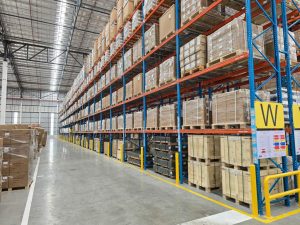
Bonded warehouse services are a great option for importers, exporters, and e-commerce businesses. These services help you improve your cash flow, give you enough space for your goods, and streamline your business operations.
Are you a business owner who needs a warehouse to store your imported products? Want to save time and money at the same time? Opting for bonded warehousing can be the best option for you. Hearing about the bonded warehousing for the first time? Don’t have much information about these services? Don’t worry! This blog will provide almost all the essentials to help you make the right decisions.
What is Bonded Warehousing?
In simple words, a bonded warehouse is just like partnering with a warehouse service provider with some extra benefits. Instead of paying for the full warehouse, you only pay for your occupied space. Yes! You heard it right. This service will help you get enough space for your items at a lower cost.
Want to Partner with a Bonded Warehouse Service Provider? Here’s What You Need to Know
Benefits You Can Get by Opting for a Bonded Warehouse Service
- Delayed Tax Payments: One of the biggest benefits of a bonded warehouse is that you don’t have to pay customs duties or taxes right away. You can wait until the goods are sold or moved out of the warehouse. This helps improve cash flow and reduces financial pressure.
- Safe and Secure Storage: Bonded warehouses are highly protected and monitored, ensuring your goods stay safe from theft or damage. This gives you peace of mind when dealing with high-value or delicate items.
- Easier International Trade: These warehouses make it easier for you to handle imported and exported goods. They simplify the customs process and reduce the stress of managing paperwork.
- Better Inventory Management: With professional storage and organized systems, you can track your products easily. This helps in managing supply efficiently and avoiding losses.
- Cost Savings: By delaying tax payments, reducing losses, and improving management, bonded warehouses help you save money in the long run.
Who are the Eligible Partners of Bonded Warehouse Services
Many people often ask online: Who is eligible to use bonded warehouse services? Here’s the answer:
- Importers and Exporters: Importers and exporters store goods without paying duties until the products are sold or shipped. This helps them manage cash flow better.
- E-commerce Businesses: Online sellers dealing with international products can use bonded warehouses to keep their stock ready for quick delivery.
- Manufacturers: Manufacturers who use imported materials can store them in bonded warehouses and take them out only when needed.
- Distributors and Wholesalers: Distributors handling large quantities of goods can store products safely in bonded warehouses and release them as per market demand.
- Seasonal Businesses: Businesses that sell more during specific seasons can store their goods in bonded warehouses until sales increase. This will help them avoid financial loss from the wastage of products and save costs on storage.
Wrapping Up!
If you are eligible for bonded warehousing and want to save money on storage, this is perhaps the best option for you. Our warehouse facility in South Florida offers over 82,000 square feet of strategically located warehouse space near Port Everglades, Fort Lauderdale. This location allows us to provide seamless logistics and helps you preserve valuable cash flow. Feel free to contact us to learn more about our bonded warehousing services.
October 14th, 2025 by Derick

Maintaining the supply chain is crucial to growing your pharma business. A pharmaceutical warehousing service makes things much easier for you by handling storage and deliveries while maintaining quality and complying with regulations.
Are you a pharma company owner? Want to improve your product deliveries without compromising on quality? But managing everything, from storage to delivery, can be daunting. Advancing in-house solutions also impacts your revenue. This is where pharmaceutical warehousing services come into play. By partnering with a pharmaceutical warehousing service provider, you can streamline your supply chain without burning your profits.
If you are curious to know how it makes a real difference, here is a detailed breakdown:
Uncovering How Pharmaceutical Warehousing Services Improve Your Supply Chain
Keeping Your Medicines Safe and Effective
When it comes to medicines, appropriate storage is crucial to maintain quality. As a renowned warehouse service provider, we offer temperature-controlled storage space for pharmaceutical products. Whether it’s vaccines that need refrigeration or tablets that must stay dry, our warehousing services ensure everything remains in perfect condition.
Maintaining Compliance with Regulations
If you have been in this industry for a long time, then you already know how strict pharma regulations are. Many clients often ask: How do you ensure compliance with pharmaceutical regulations and standards? We use an ISO management system, and our team conducts vendor audits to ensure compliance with government regulations and pharmaceutical standards.
Speeding Up Order Fulfilment
In this industry, time is everything. Hospitals, pharmacies, and patients depend on quick deliveries. We provide fast, responsive delivery services tailored to your needs with same-day options and just-in-time logistics. The result? Your products reach customers quickly, and you build stronger trust in your supply chain.
Reducing Costs and Losses
By opting for a pharmaceutical warehousing service, you can actually save money. By opting for our warehousing solutions, you can reduce product spoilage, handling errors, and improve efficiency. These advantages help you improve your supply chain and lower your overall costs.
Strengthening Supply Chain Visibility
When you store your products in a professional warehouse, it actually helps improve your supply chain. You can track your shipments, monitor product movement, and even predict demand more accurately. This visibility helps you make smarter business decisions and respond quickly to any challenges.
Adding Flexibility to Your Operations
Demands for medicines can change suddenly. Our pharmaceutical warehousing solutions give you the flexibility to scale up or down based on your needs. Whether it’s seasonal demand, new product launches, or global expansion, our warehouse can adapt without disrupting your supply chain.
Summing Up!
If you want to improve your pharma supply chain with a trusted warehousing partner, you have reached your destination. We offer temperature-controlled warehousing and secure logistics to ensure quality and compliance. Feel free to contact us if you want to learn more about our warehousing services.
October 3rd, 2025 by Derick

In today’s e-commerce business landscape, flexible warehousing is essential to handle a sudden surge in demand. It not only helps you deliver products without making delays but also saves money in slow months. These advantages help you speed up your business growth.
Are you a retailer or an e-commerce business owner? Struggling to deliver your products to all your customers due to limited warehouses? In-house warehousing not only increases your expenses but also prevents you from fulfilling your customers’ demands. This is where flexible warehousing solutions come into play, allowing you to store the required products in your customer-heavy locations.
If you are curious to know how hiring a flexible warehousing service provider helps you grow your business, here is what you are looking for.
Struggling to Handle Seasonal Demand? Here’s How Flexible Warehousing Solutions Can Help!
- Saving Money During Cold Months: In the peak seasons, businesses require more space for storing their products, but at other times when the demand is low, there is no need to fill the warehouses. By opting for our flexible warehousing solutions, you can pay for your required space. That’s it.
- Handling Sudden Surges in Demand: Unlike in-house solutions, our warehousing solutions will give you the required space. With our services, you can avoid the stress of keeping your products and delivering them on time to your customers. Our facility boasts 82,000 square feet of versatile space that can handle all types of product storage requirements.
- Faster Delivery for Customers: If you don’t have any warehouses closer to your customers, it is difficult to deliver products on time. By opting for our flexible solutions, you can improve your delivery time and handle your seasonal demands with ease.
- Lower Risk of Overstocking: If your business is growing, a lack of warehouses and slow deliveries can negatively affect your business reputation. Flexible warehousing reduces this risk since businesses can adjust their storage based on real-time demand, not just guesses.
What You Can Expect from Our Flexible Warehousing Solutions
Many people often ask: How flexible are your warehousing solutions for short-term and long-term storage? With 82,000 square feet of versatile space, we can fit your needs, whether short-term or long-term. We offer secure facilities in Miami, Port Everglades, and West Palm Beach with flexible rental options. With us, you always get safe, convenient, and reliable storage.
In a Nutshell
If you want to grow your e-commerce business, a flexible warehousing service is your best buddy. If you need a flexible warehouse service in Miami or West Palm Beach, we are the only option you can rely on. Feel free to contact us if you have any questions about our services.
August 18th, 2025 by Derick
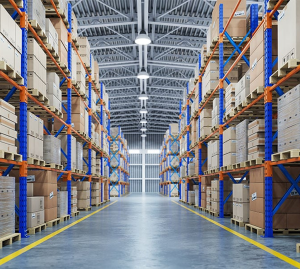
When it comes to storing pharmaceutical products, temperature control is more than just an operational detail—it is the core of product safety and effectiveness. Medicines, vaccines, and biologics are often highly sensitive to environmental conditions. Even slight fluctuations in temperature can damage their composition, making them unsafe or ineffective for patients. This is why pharmaceutical warehousing relies on advanced temperature management systems and strict monitoring to protect these critical supplies.
As the demand for temperature-sensitive products grows worldwide, the importance of maintaining proper storage conditions in pharmaceutical warehouses has never been greater.
Why Temperature Control Matters in Pharmaceutical Warehousing
Keeps Medicines Safe and Effective
Pharmaceutical products are designed to work within certain chemical and biological parameters. Exposure to excessive heat, cold, or sudden temperature shifts can break down active ingredients, leading to reduced effectiveness or complete spoilage. Proper temperature control ensures these products remain potent and safe for patients who depend on them.
Supports Cold Chain Management
Cold chain logistics is a lifeline for storing and transporting temperature-sensitive items like vaccines and insulin. A reliable logistics provider ensures this process runs smoothly by using specialized refrigeration zones, insulated packaging, and continuous temperature monitoring. Even the smallest gap in this chain can result in an unusable shipment, which is why warehouses focus on keeping conditions consistent at every stage.
Reduces Financial and Operational Losses
Spoiled pharmaceuticals are not just dangerous, they are expensive. A single batch of ruined medication can cost companies thousands or even millions of dollars. Add to that the time and effort needed to replace the products, and the damage multiplies. A reliable temperature-controlled storage system minimizes such risks and helps warehouses avoid disruptions in the supply chain.
Meets Regulatory Requirements
Pharmaceutical warehousing operates under strict guidelines set by regulatory bodies like the FDA and WHO. These rules require warehouses to monitor and document temperature data around the clock. Failure to comply can lead to fines, loss of licenses, and reputational damage. Investing in top-tier temperature control systems helps warehouses stay compliant and maintain their standing in the industry.
Protects Patient Trust and Health
At the end of the day, every effort made in pharmaceutical warehousing directly impacts the lives of patients. Proper temperature management ensures that medications work as intended and helps maintain trust between healthcare providers, suppliers, and end users.
Final Thoughts!
Temperature control in pharmaceutical warehousing is not just about preserving products—it is about safeguarding health and lives. As medical treatments become more advanced and sensitive to storage conditions, the need for precise and reliable temperature management will continue to grow. If you are looking to store your pharmaceutical products in a proper temperature-controlled warehouse, Call us today to ensure your goods stay safe and compliant.
June 10th, 2025 by Derick
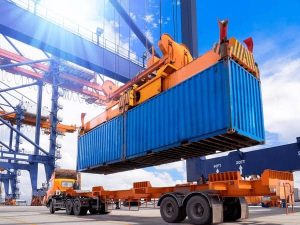
Do you want to expand your business? Want to ship your products from the port to warehouses for streamlining your supply chain? Opting for a reliable logistics service in Miami can help you resolve your goods transportation issues by optimizing routes, consolidating shipments, and implementing advanced tracking systems. These facilities not only streamline your transportation but also reduce costs and arrival time.
In this blog, you will learn the role of a reliable logistics company for business in streamlining your transportation.
Exploring How a Logistics Company Can Streamline Your Transportation
Fast and Efficient Drayage
If you need to move goods over short distances, usually from a port to a nearby warehouse, choosing a logistics company with drayage services can be a great option. With years of experience, we have been offering fast and efficient drayage services to improve your delivery time. We are located close to major Florida ports and can handle drayage quickly and efficiently.
Safe and Spacious Warehousing
When it comes to long-distance transport, sometimes your goods need a place to stay before they are sent to the next destination. This is where warehousing comes in. As a renowned logistics company, we offer secure storage options in multiple locations. Our largest warehouse, located at Port Everglades, covers 82,000 square feet. With this large warehouse, we can store solar panels, pharmaceutical gel capsules, cars, electronic items, wine, and more.
One Company, Complete Solutions
One of the biggest benefits of using our logistics services is that we handle everything in one place. From picking up your goods at the port to storing them and delivering them to their final destination, our team manages the entire process. You don’t have to coordinate with different companies, which saves you time and reduces stress.
Support for Businesses of All Sizes
With a good reputation in the market, we understand that each company has different needs. That’s why we work with both small and large businesses to help them resolve their transportation issues. Whether you ship a few boxes a week or full containers every day, we can help you create a plan that fits your schedule and budget.
In a Nutshell
If you want to simplify your goods transportation and maintain your service chain, opting for our logistics service can help you achieve your goals. With a team of experienced professionals and specialized trucks, we can help you with your transportation needs. You can contact us directly for more details.
May 22nd, 2025 by Derick
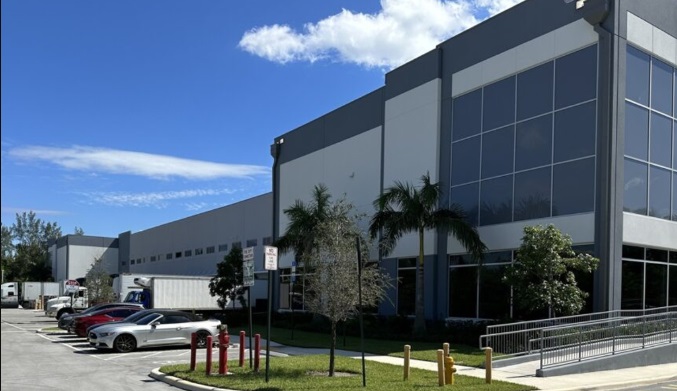
In the fast-paced world of logistics, warehousing services in Miami have become an essential component for businesses aiming to expand their reach, improve efficiency, and keep up with growing customer demands. Miami’s strategic location as a global trade hub makes it an ideal city for warehousing, offering direct access to international ports, airports, and highways. Companies seeking to improve their logistics operations rely on efficient warehousing to reduce costs, increase delivery speed, and maintain inventory accuracy.
Whether you’re an importer, manufacturer, or e-commerce business, Miami offers a range of warehousing options that can be tailored to your business goals. From short-term storage solutions to fully integrated logistics systems, warehousing plays a vital role in today’s competitive landscape.
What Makes Miami a Top Location for Warehousing Services?
Miami’s proximity to major transportation routes makes it a natural choice for businesses looking to streamline supply chains. The Port of Miami and Miami International Airport provide direct access to international markets, especially Latin America and the Caribbean. This connectivity supports timely movement of goods and reduces shipping costs.
Warehousing in Miami is more than just storing products. Modern warehouses offer a variety of services such as inventory control, order fulfillment, packaging, kitting, labeling, and temperature-controlled storage. These services allow businesses to focus on core operations while leaving logistics to professionals.
The availability of bonded warehousing in Miami also enables companies to store imported goods without immediate payment of duties and taxes. This is particularly useful for businesses involved in global trade, giving them financial flexibility and better customs management.
The Role of Drayage Services in Supporting Warehousing
A key part of warehousing logistics in Miami is drayage service, which refers to the short-distance transportation of goods between ports, rail yards, and warehouses. Efficient drayage is crucial for timely cargo movement, especially when coordinating with tight schedules at seaports.
With the Port of Miami being one of the busiest in the United States, having reliable drayage partners helps businesses avoid delays and extra costs. Drayage services connect the dots between cargo arrival and warehousing, creating a seamless supply chain process.
For businesses relying on just-in-time delivery or high-volume imports, drayage plays a key role in ensuring that goods move quickly from ship to shelf. It also reduces the risk of port congestion and demurrage charges, making it a valuable service for any Miami-based logistics strategy.
Advantages of Choosing Professional Warehousing Services
Using professional warehousing services offers many advantages beyond storage. One of the key benefits is access to experienced logistics teams who understand the nuances of inventory management, supply chain planning, and order fulfillment. These professionals use advanced warehouse management systems (WMS) to track inventory in real time, ensuring accuracy and visibility.
Another advantage is scalability. As your business grows, warehousing providers can easily adjust the space and services to match your evolving needs. This flexibility helps avoid unnecessary overhead costs and supports long-term growth.
Many modern warehouses also support e-commerce businesses by offering pick-and-pack services, returns management, and same-day shipping. These value-added services help improve customer satisfaction and allow businesses to compete in a crowded market.
Industries That Benefit from Miami Warehousing
Several industries benefit from warehousing services in Miami, including retail, pharmaceuticals, automotive, electronics, and food and beverage. For instance, pharmaceutical warehousing requires temperature-controlled environments, strict inventory protocols, and regulatory compliance. Miami warehouses are well-equipped to handle these sensitive products.
Similarly, businesses in the food and beverage sector rely on cold storage and efficient distribution systems to keep products fresh and meet safety standards. The wide range of available services in Miami’s logistics sector means that businesses can find tailored solutions no matter their industry.
Final Thoughts
In a city like Miami, where trade and logistics are thriving, professional warehousing services have become essential for operational success. From improved inventory management to faster deliveries and cost-effective distribution, the benefits are clear.
Choosing the right warehousing partner can transform your supply chain and set your business up for long-term growth. One reliable option in the region is Accurate Trailers, known for offering customized logistics and warehousing services that support business efficiency.
March 23rd, 2025 by Derick
Warehousing is integral to supply chain efficiency. As companies continue to look out for ways to cut costs and boost productivity, one logistics strategy that has become highly popular is cross docking. A cross-docking warehouse acts as a sorting and transfer hub, providing on-the-go service to ensure your goods can seamlessly transition from incoming shipments to outbound vehicles with minimal or no storage in between.
When done the right way, warehouse cross-docking helps streamline supply chains, leading to faster delivery and lower shipping costs. However, in order to achieve these goals, you need to choose the right supplier who can offer these benefits while minimizing the risks that come with it. In this guide, we will offer crucial topics that will help you select the best cross-docking services that best serve your shipping needs.
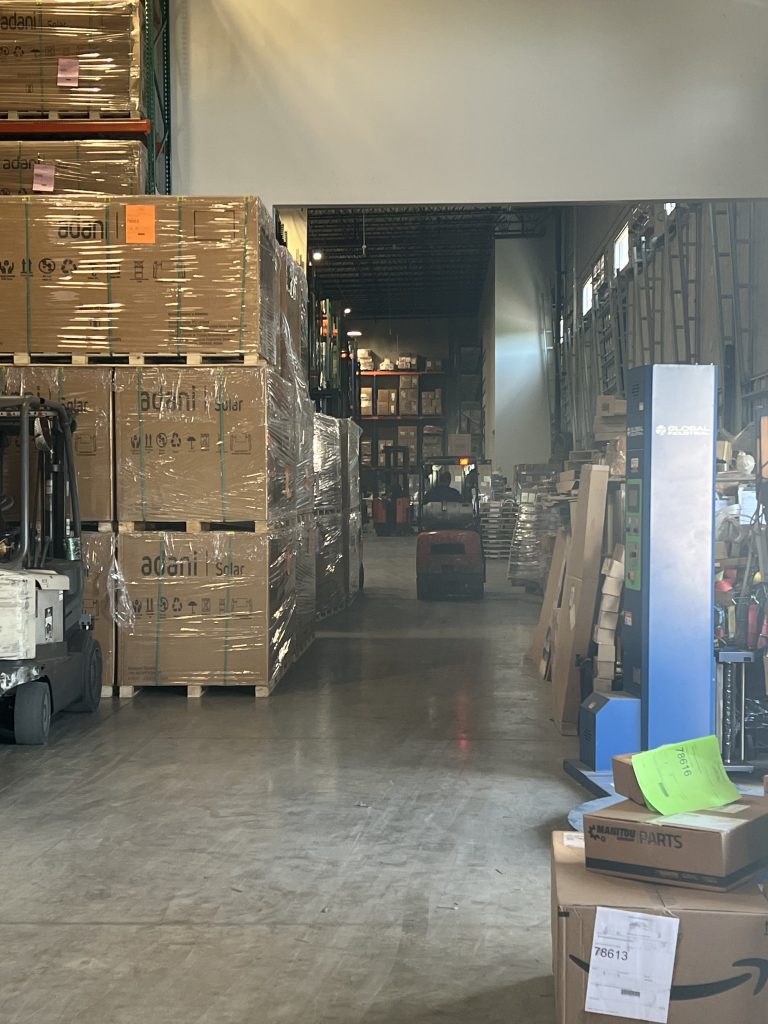
1. Delivery Schedules
Take into account the delivery schedule of your cross docking partner. A scheduling clash can put you off guard so it’s crucial to be aware of the days on which your provider delivers. Many providers delay delivery until they have met a certain volume requirement, which means that your containers can remain stuck for days or weeks beyond schedule.
This is directly tied to customer satisfaction, which is why it is important to confirm whether your provider is volume-dependent or not and can work according to a less-than-truckload sailing schedule.
2. Cross Docking Warehouse Platform Shape
In cross-docking logistics, you should also know about the shape of the cross-dock facility you will get. Generally, cross-docking facilities are built using an “I” configuration, which aligns with the shape of an elongated rectangle. This shape can accommodate up to 150 outbound and inbound doors to facilitate the linear movement of cargo to and from the facility with a minimum floor area to optimize costs.
In contrast, a T-shaped facility has between 150 and 150–200 doors, which can minimize congestion so that you can move goods relatively quickly. If you are dealing with large-scale operations, you would do well to opt for an X-shaped facility, as it features the highest dock door density and facilitates higher levels of cargo flow for higher efficiency.
3. Location Matters
When choosing the location of a cross-docking facility, make sure that you factor in the temperature sensitivity of your load. The ideal warehouse should be located at some point in the route to your endpoint so that your freight has to travel a limited number of miles to reach its destination. An off-route warehouse would lead to backtracking, thus adding up to your costs.
The facility should also arrange for the goods to be located within the perimeter of the location so that trucks can easily locate it which helps reduce deadhead time and the costs it incurs. A salient approach would be to opt for a facility where you can consolidate smaller inbound shipments into larger, full truckloads. This would allow you to benefit from a lower per-unit transportation cost.
4. The Cost-Volume Relationship in Cross-Docking
If you are to justify the price you are paying for a cross-docking facility, then you need to have a sufficient volume required to complete the truckload. This is relevant in assessing your delivered price as it is directly related to the inbound freight costs. If cost-efficiency is your aim, then you would want that price to be distributed among as many pallets or cases as you can accommodate.
If you are limited by the volume of your trailer, one way to evade this is to explore your network to check whether you can haul your load onto any other freight destined for your target area either for stop-off or delivery.
5. Temperature Control for Sensitive Goods
If you have a temperature-controlled load in your freight, you don’t want to end up with one that cannot offer the optimum conditions for effective cold storage. While cross docking companies may claim to offer temperature-controlled storage space, in reality, it may be nothing more than ambient storage or spare reefer trailers.
This can expose your load to breakdown and spoilage and even increase the risk of theft. That is why you should seek out a temperature-controlled space where your goods can be stored safely and reliably. Before settling for a cross-dock partner, visiting the location would be a good idea to ensure your products receive the care they deserve.
6. Technological Level Of a Provider
Technology integration should be a key consideration when selecting a cross-docking facility, especially if your business has automation needs. Evaluate the technology capabilities of a provider, as this can have a significant impact on the efficiency and productivity of your supply chain.
Seek out a provider well-equipped with the latest technologies, such as advanced tracking systems, real-time visibility, and integrated software, to ensure you can keep track of your goods throughout their journey from the warehouse to their destination. It would also ensure that your goods are handled and processed using the right technologies for maximum efficiency and a lower risk of damage due to handling.
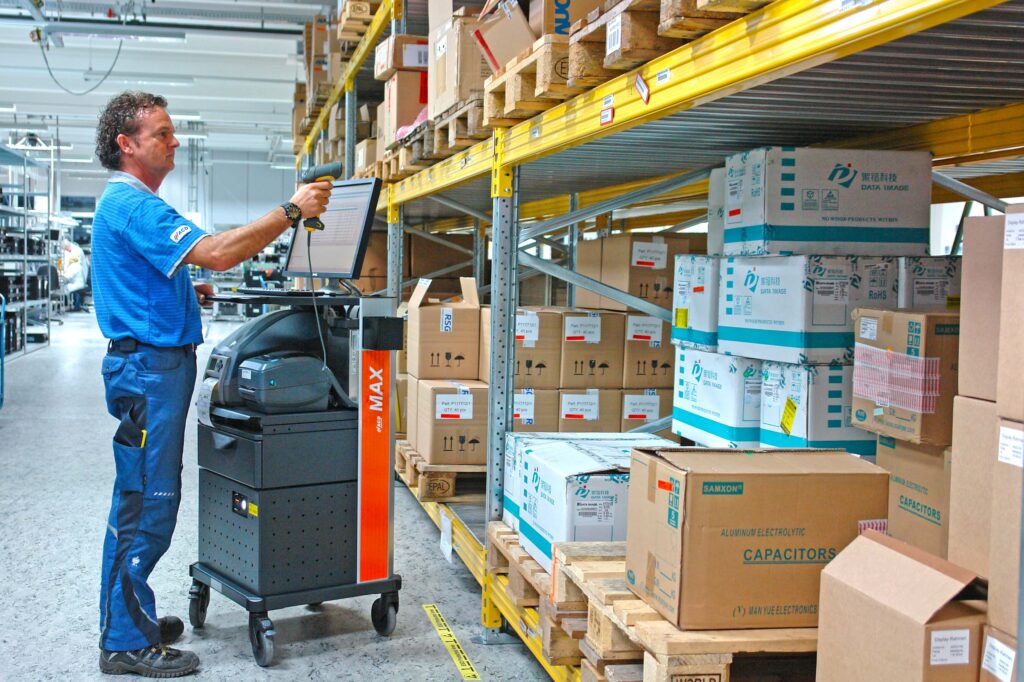
7. Established Providers with Expertise and Experience
Working with a reliable provider can make all the difference to the quality of your cross docking operations. Instead of choosing randomly, search a cross docking warehouse’s track record in terms of its capabilities to meet deadlines as well as a high safety record with low rates of incidence.
These two indicators would assure you that the provider has the experience to handle similar volumes and products and enjoys a credible reputation in the cross-docking realm. You can take further cues from what other customers have to say about their services and gather testimonials from businesses to ensure you have made the right choice.
FAQS
1. How Can I Ensure That My Cross-Docking Warehouse Location Optimizes Transportation And Reduces Shipping Times?
When choosing the location, ensure the warehouse is accessible to major transportation hubs such as ports and highways to reduce transit times. If you ship internationally, consider whether the warehouse offers multimodal transport options to optimize transportation routes.
2. What Pricing Factors Should I Consider When Choosing A Warehouse?
Evaluate the cross-docking service’s pricing structure to ensure it fits your budget. Inquire about whether the warehouse is charging handling fees per pallet or load. You can choose between a long-term contract or a flexible model, depending on your business model, and you can ask about hidden charges.
3. How Can A Cross-Docking Warehouse Improve My Supply Chain Efficiency?
Cross-docking warehouses facilitate the quick transfer of goods from inbound to outbound transportation, which helps reduce storage time. This, in turn, leads to faster deliveries, minimizes inventory costs, and improves supply chain efficiency.
4. What Are The Key Factors To Consider When Choosing A Cross-Docking Warehouse?
Look for a warehouse that is strategically located near transportation hubs and offers efficient handling processes and a real-time tracking facility. Prefer providers offering scalable services to keep up with changing business demands and seasonal fluctuations, such as volume spikes or additional logistics support
Cross-Docking Warehouse Near Me: Finding the Right Partner
You will need to think strategically when choosing a cross-docking warehouse for your operations. Factors like location, technological prowess, and infrastructure of a provider as well as its reliability, are vital in selecting a warehousing service that best suits your business. This would help you optimize your supply chain to yield higher efficiency, reduce costs, and enhance overall supply chain management.
Are you struggling to find cross docking near me? We can help you find your ideal warehouse for your shipping needs, whether for the short-term or the long-term. Contact us today to get expert guidance on how our 3PL warehousing services can help you achieve success in cross-docking logistics and give you a competitive edge.
October 1st, 2024 by Derick
The Port Strike has officially commenced, leaving many uncertain about its duration and repercussions. What’s clear is that all parties involved from importers to 3PL warehouse providers or trucking companies, are feeling the effects in one way or another.
Manufacturers with commodities stuck at the ports, especially perishables, are facing significant challenges. These businesses will need to explore alternative logistics solutions to mitigate the impact of delayed container shipments.
The best thing we can do is work together as logistics solutions providers and expand our networks within and outside our local communities.
Key Considerations for Importers
- Engage Domestic Suppliers
Given the disruptions, it’s crucial to assess your domestic supplier network. This may help reduce reliance on affected ports and streamline operations.
2. Adjust Port of Entry and Grow your Carrier Network
If you’re shipping high volumes of containers, you may have already started routing your imports through West Coast ports. For businesses primarily serving East Coast customers, finding reliable final-mile partners might be very helpful. While many over-the-road carriers are available for dry van and reefer shipments, not all provide final delivery services.
For instance, if a large retailer needs to transport freight from New York to retail locations in downtown Miami, collaborating with a final-mile carrier can ease deliveries through congested urban streets. A final-mile carrier may also have a warehousing terminal, where they can store your freight until your goods are scheduled to be delivered to stores or retail outlets.
- Expand Your Freight Forwarding Network and Consider Air Freight
Depending on the nature of your freight and its volume, exploring air freight options can be a viable alternative, particularly for perishables that cannot remain in containers for extended periods. Many freight forwarders can quickly provide quotes for air shipments. Additionally, freight forwarders often have access to a wide network of trusted 3PL warehouse providers, which can be invaluable if you need storage solutions during the strike. If you switch to a different port of entry, your freight forwarder can help you find a reliable warehouse partner in that new location.
4. Collaborate with Local 3PL Warehouse Providers
If you have containerized freight that you managed to retrieve from the port but urgently need to transport elsewhere, consider partnering with local drayage carriers and transloading warehouses. This combination of providers can efficiently move your freight to another mode of transportation, ensuring that the flow of goods continues despite disruptions
5. Non-Union Terminal Operators Whether you’re an importer or a logistics service provider, research non-union terminal operators in your area. While they may be saturated with requests, it’s worth reaching out. Crowley and King Ocean operate non-union vessels and still have some non-union port workers available, which allows them to continue pulling containers out of the yard
Conclusion
As a drayage carrier, we at Accurate Trailers are committed to doing everything possible to best serve our customers and provide additional logistics alternatives. One of the key solutions we’ve implemented is offering intermodal drayage services through Florida East Coast Railway, which allows for seamless transportation options even amid disruptions.
Here are some providers in the South Florida market that can assist with logistics needs during this challenging time:
By implementing these strategies and leveraging available resources, businesses can navigate the challenges posed by the port strike more effectively, ensuring that they continue to serve their customers and maintain supply chain integrity. Adapting quickly and utilizing strong partnerships will be key during the Port Strikes.









